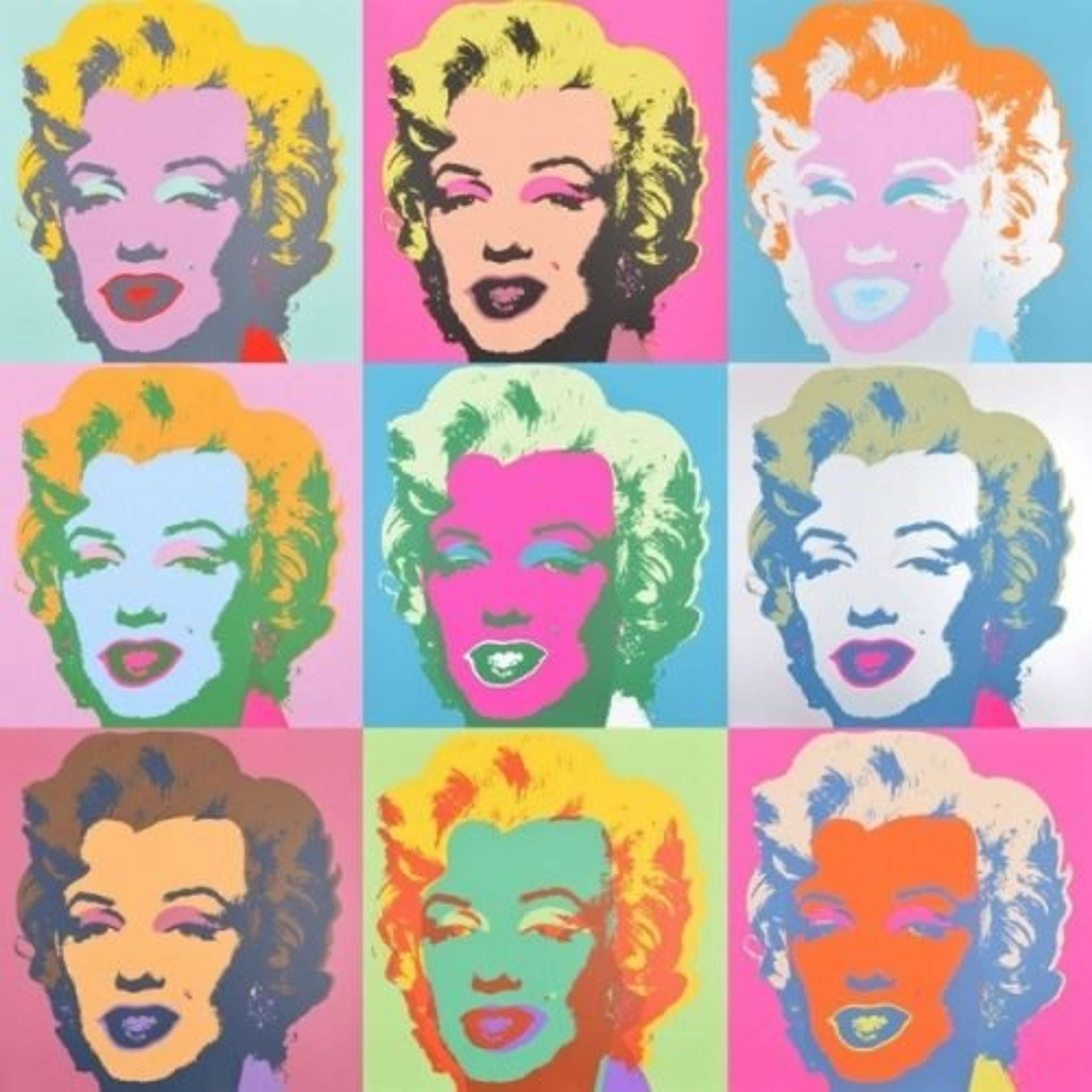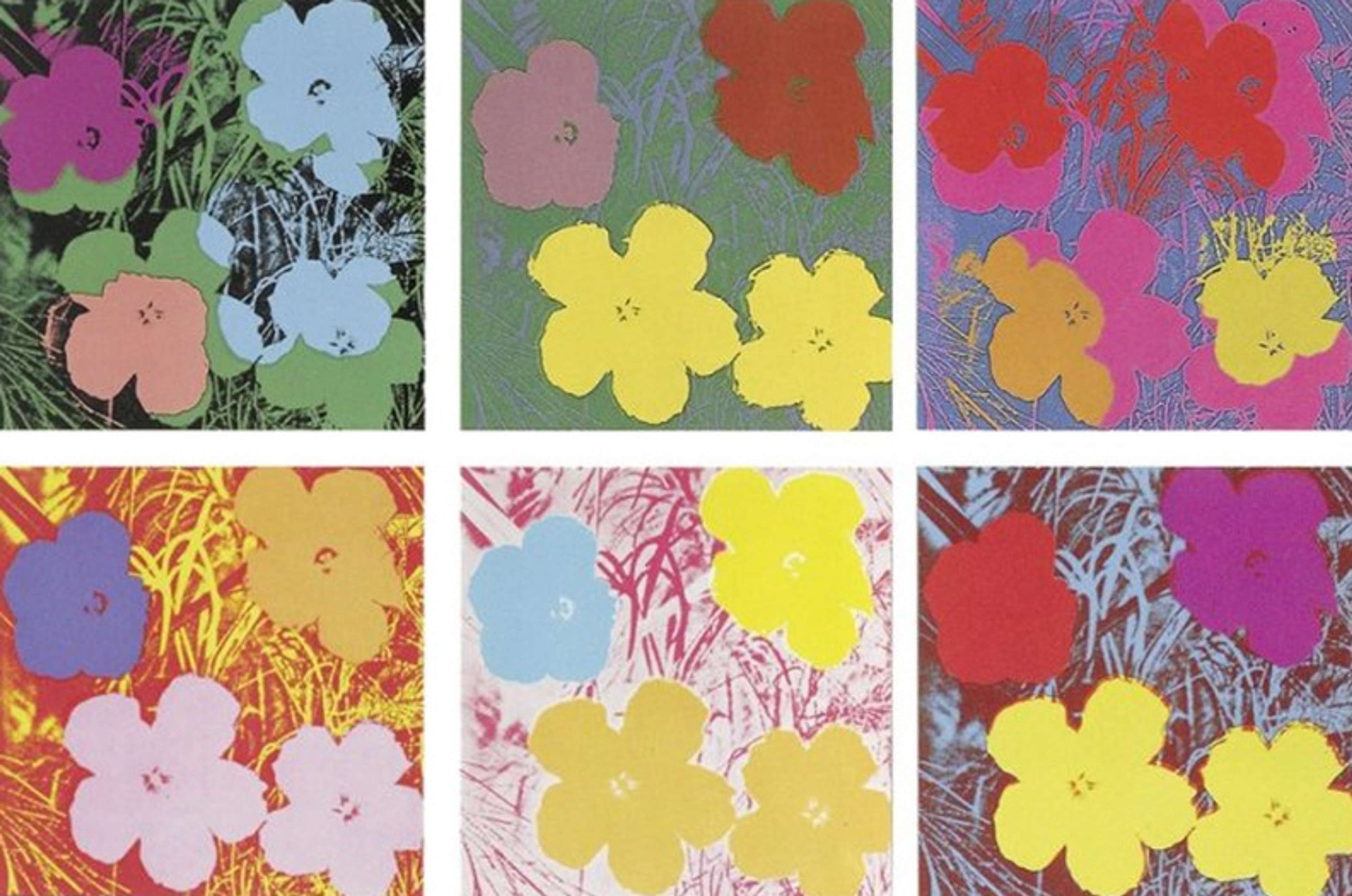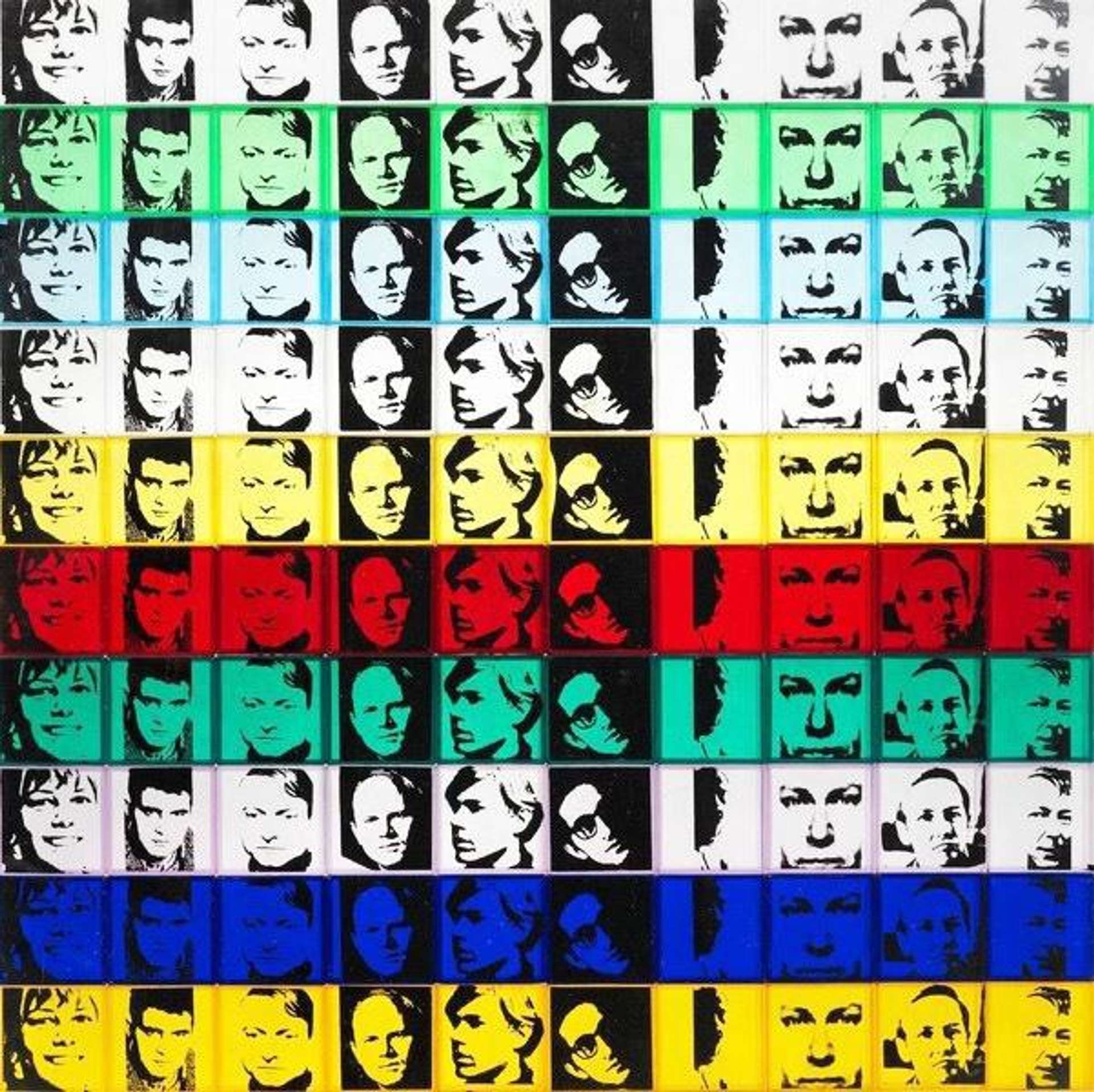 Muhammad Ali © Andy Warhol 1978
Muhammad Ali © Andy Warhol 1978Market Reports
Perhaps the biggest of the artistic innovations Andy Warhol is credited for was his championing of reproduction and serialisation in art. In this article, we take a look at how Warhol’s interest in repetition and mechanical production translated into some of the most loved, and most valued, sets of prints the market has to offer – and why you should invest in them.
How Many Prints Did Andy Warhol Make in His Lifetime?
Throughout his life, Andy Warhol produced over 19,000 prints – an astonishing number that reflects the artist’s love for the medium. These prints brilliantly express many of the artist’s interests, from mass culture to fame and celebrities to more philanthropic concerns. Warhol’s dedication to printmaking was motivated above all by his fascination with serialisation and repetition – which he saw as a distinctive feature of modern-day America.
Equally important, however, was Warhol’s strong belief that his art should be made available to everyone, regardless of economic background. The prints he produced partook in this attempt to democratise art, both at the level of meaning – through popular and recognisable subjects – and accessibility. Between the 1960s and 1980s, anyone who wanted to purchase a Warhol print could do so at considerably lower prices than today.
The Market for Andy Warhol Prints
Shortly after Warhol died in 1987, the stock market crashed. At that point, Warhol was internationally recognised as a celebrity. It is therefore no surprise that, in the climate of a volatile market, investors decided to pour their money into his work, effectively establishing a reputation for Warhol’s art that, to this day, has not waned.
In fact, Warhol’s art has appreciated over time, particularly in the last 20 years, and accounts for a sixth of all contemporary art sales. While Warhol’s practice spanned many media, it is his paintings and prints that have dominated the art market. Warhol’s paintings fetch some of the highest prices at auction but their high asking prices determine that only a very small band of ultra-high net-worth individuals can afford them. Contrarily, the wider availability and comparatively lower prices of prints make them a more accessible, but equally coveted, purchase for collectors interested in Warhol.
With Warhol’s established reputation and name, his prints, and even more complete sets, continue to sell far above their high-end estimates, granting profitable returns to their sellers.
 Endangered Species © Andy Warhol 1983
Endangered Species © Andy Warhol 1983Why Is Collecting Complete Editions Better?
With multiplicity and seriality at the heart of Warhol’s practice, it is no surprise that collectors interested in Warhol’s prints are now on the hunt for complete sets or portfolios of prints – after all, owning an entire array of Warhol prints comes at a lower cost than collecting an entire set of his paintings. Even so, as growing commercial interest has turned Warhol prints into some of the most sought-after items on the market, finding a complete set with matching edition numbers is rare.
The rarity and difficulty of finding complete sets of prints with matching numbers is owed to the lack of financial and art historical value that prints held at the time Warhol made them – nonsense, you’ll say. And yet, perhaps due to the easy accessibility and the reduced price, buying a Warhol print back in the day, to most, and especially at the start, bore almost no relationship to buying an “original Andy Warhol.”
This meant that, while buying an entire set of prints was cheaper and easier, most buyers were unaware of the financial worth and potential gains offered by owning an entire set and many dealers split the Warhol sets up. Additionally, given the prominent size of the prints, most people did not have the physical space to store or let alone hang the whole sets together which further discouraged potential buyers from collecting complete sets.
Years later, with Warhol leading the art market, demand for complete sets, particularly sets with the same number – i.e. produced in the same session – is higher than ever, while their limited availability has fetched some of the highest prices the print market has ever witnessed.
This is true in particular of Warhol’s later works, produced in the years before his death, between 1982 and 1987, when Warhol’s commercial success reached its apex, and of prints portraying Warhol’s most iconic subjects, such as the Campbell’s Soup Cans, Marilyn, and his Flowers.
Not surprisingly, the second-highest auction record for a set of Warhol prints was in 2018 at Sotheby’s with the sale of the complete set of 10 screen prints of Marilyn (1967), all numbered 186/250, sold for £2,349,000. This was closely followed by Van Ham’s 2021 sale of a complete set of 10 screen prints of Warhol’s Flowers (1970), all numbered 57/250, which sold for £1,883,388.00. More recently, in 2022, Sotheby’s and Christie’s led the market by selling respectively two complete sets of Warhol’s Maos and Cowboys and Indians, which fetched £806,815.00 and £772,959.00 and a complete set of Marilyns, numbered 108/250, which sold for over £4 million.
With varying subject matters, what these sales have in common, beyond the astounding numbers they achieved, is that they all far exceeded their pre-sale estimates, which confirmed the demand from collectors for owning complete sets of Warhol prints.
Themes and Series
While the vast array of subjects immortalised in these prints means that everyone can resonate with Warhol’s art, it also makes it harder for buyers to know what to look for. To help you navigate the vast world of Warhol collecting, here are some of the themes Warhol explored in his series:
 Marilyn © Andy Warhol 1962
Marilyn © Andy Warhol 1962Icons of Popular Culture
Warhol’s practice has been shaped by his obsession with fame and celebrity. From his Marilyns to his Maos, from Mick Jagger to Liza Minelli, Elizabeth Taylor, Jacqueline Kennedy to his Reigning Queens series, almost anyone who was someone became immortalised in one of Warhol’s Pop portraits.
It all began, the legend goes, with Marilyn Monroe. Long fascinated by death and natural disasters, Warhol was deeply struck by the premature death of the American actress in 1962, as well as by the obscure circumstances surrounding her death. Soon after the actress’s passing, Warhol was at work to produce his first Marilyn painting, the Marilyn Diptych (1962), which he then adapted as a series of prints in 1967.
 Mao © Andy Warhol 1973
Mao © Andy Warhol 1973After Marilyn, there was Mao. In 1972, following President Richard Nixon’s first visit to China, Warhol captured Chairman Mao Zedong in a series of colourful and vivid portraits, where he also experimented with the Xerox machine for the first time. At the time, Xerox machines were equipped with an anti-forgery device that enlarged the copy by two to three per cent. Warhol discovered that as the copying process went on, the image eventually deteriorated, and Mao’s face progressed from recognisable features to an unintelligible group of lines.
While images of the diplomatic encounter flooded the media, Warhol decided to draw the image for his portrait from Mao’s Little Red Book, a popular collection of propaganda essays widely distributed throughout the Chinese Cultural Revolution (1966-76) to spread the Communist Ideology. Mao also marked an important stylistic development in Warhol’s approach to printmaking: it is in these images, for the first time, that Warhol implemented a hand-drawn line to add gestural expressiveness to his work.
As typical of his early printing practice of the 1960s and early 1970s, for these prints, Warhol relied on images drawn from public sources. However, this changed around the mid-1970s, when Warhol switched from using pre-existing representational imagery to using his own photographs to portray music legend, friend, and Rolling Stones lead singer Mick Jagger. In 1975, when Jagger and his wife were renting Warhol’s apartment in New York, Warhol captured his friend using his Polaroid. He took over 40 pictures, and then selected his favourite 10, enlarged them and drew on top of the image, which resulted in a highly stylised image.
Actresses and actors, athletes, politicians, musicians – Warhol’s creativity and celebrity obsession knew no bounds. Seen together, these images represent a cultural artefact, a testimony of and a homage to the icons of a generation.
Still Life:
Some of Warhol’s most known and best performing works are his variations on the genre of ‘still life’, which he adapted in his distinctive Warhol style. From his colourful representation of flowers to his macabre portrayals of skulls and his consumer products, arguably no other artist innovated the traditional painterly genre with such originality and wit.
Warhol’s main concern was with mass culture and its symbols. He wanted to capture the essence of a new generation of American consciousness, defined by consumerism, mass media and advertising. Series like his Campbell’s Soup Cans reflect this aim and have now become some of the most recognisable emblems of contemporary art. Produced for the first time in 1962, Warhol reiterated the motif throughout his whole career. The great popularity of the print was confirmed by a 2021 sale held at Phillips, where a 1968 complete set of 10 screen prints of Campbell’s Soup Cans was sold for over £1 million.
 Flowers Set © Andy Warhol 1970
Flowers Set © Andy Warhol 1970An equally popular motif that Warhol explored were flowers, which he captured in a famous series of paintings of 1964 and 1965, and in a portfolio of 10 screen prints, Flowers (1970). Departing from his depictions of mass-produced products and celebrities, the Flowers series was perhaps one of the most unusual, yet now iconic, depictions in Warhol’s oeuvre – one, however, that confirms his versatility and his never-ending attempts to re-invent himself and his art. Altering only the colours he used for the prints, Warhol’s Flowers explored how modern America had been defined by processes of mechanical reproduction and serialisation, which had defined advertising and had become the means for the perpetuation of consumer ideology.
Playful and unexpected, these series of prints betray some of Warhol’s deepest and politicised concerns.
 Myths Set © Andy Warhol 1981
Myths Set © Andy Warhol 1981Fictional Characters
From the Indians and cowboys that had shaped America’s understanding of its historical past, to Superman and Mickey Mouse, no subject of popular culture was left aside in Warhol’s practice.
Myths, which includes a collection of 10 screen prints made in 1981, is perhaps the most emblematic of Warhol’s engagement with comic books, children’s literature, movies and legends. The series includes representations of Dracula, the Wicked Witch of the West, Santa Claus and, surprisingly, even a portrait of Warhol himself – a sarcastic and prophetic comment on the artist’s iconic status?
It is in these images that a more intimate aspect of Warhol’s personality is revealed, with critics agreeing that each character portrayed references a certain moment of Warhol’s infancy or aspect of his personality. The series is one of the best-performing at auction and sold in 2020 at Sotheby’s for a whooping £662,359.00.
The artist continued his portrayal of fictional characters that shaped the modern American imagination in one of his last series, Cowboys and Indians, a portfolio of 10 screen prints depicting imaginary characters that inhabited Western movies, as well as some of the most popular actors who had brought them to life. Here, Warhol made one of his most powerful statements, commenting on the ways that movies had been central to America’s understanding of itself and of its past. As Arthur Danto stated in his commentary on Warhol’s series, “Warhol’s political gift was his ability to make objective as art the defining images of the American consciousness – the images that expressed our desires, fears and what we as a commonality trusted and mistrusted.”
The Muhammad Ali Portfolio
Amongst Warhol’s most celebrated and popular series is his 1978 Muhammad Ali portfolio. Made of four screen prints, each image immortalises “the greatest” in a different pose: the most striking being Ali’s fist ready to punch. Together, these images create a truthful portrait of the sportsman, captured as he focuses and prepares for a fight.
Admittedly not interested in sports and athletes, Warhol created this portrait as part of a commission from Richard Weisman, who was both an art collector and sports enthusiast. It was Weisman who initiated Warhol to the world of sports, convincing him to create a portfolio, Athletes, drawing together the greatest athletes of the time – Pelé, Jack Nicklaus, O. J. Simpson and Kareem Abdul-Jabbar, to name a few. And it was through Weisman that Warhol came to realise the great sway and charisma that sportsmen held on the masses, starting to see them as celebrities and icons in their own right, famously stating that “athletes are the new movie stars.”
To immortalise Ali, Warhol travelled with Weisman to Pennsylvania and took Polaroid shots of the athlete. While Weisman requested an individual portrait for each sportsman, something about Ali, perhaps his discomfort in front of cameras, struck the artist, who decided to make a portfolio of four images instead of one. According to Ali’s biographer and author Davis Miller, Warhol’s fascination with Ali went well beyond his status and was instead motivated by the artist’s ostensible interest in “the idea of American violence”, which he explored repeatedly in works like his Race Riots.
Soon after their realisation, the prints began selling for 25,000 USD, fetching some of the highest prices that Warhol prints ever achieved while the artist was still alive – a true testament to the popularity of the athlete and Warhol’s growing commercial success and recognition. Commenting on these sales, Ali stated: “Look at me! White people gonna pay 25,000 dollars for my picture! This little negro from Kentucky couldn't buy a 1,500 dollar motorcycle a few years ago and now they pay 25,000 dollars for my picture!” The success of the prints has not waned over the years, and the Ali portfolio remains to this day one of the most profitable sets.
While we may never know what led Warhol to be intrigued by such a figure, the intimate yet powerful portrait that resulted from this encounter homages Ali’s legacy as one of the most successful athletes in history, and above all else, as one of the greatest black icons of the 20th century.










